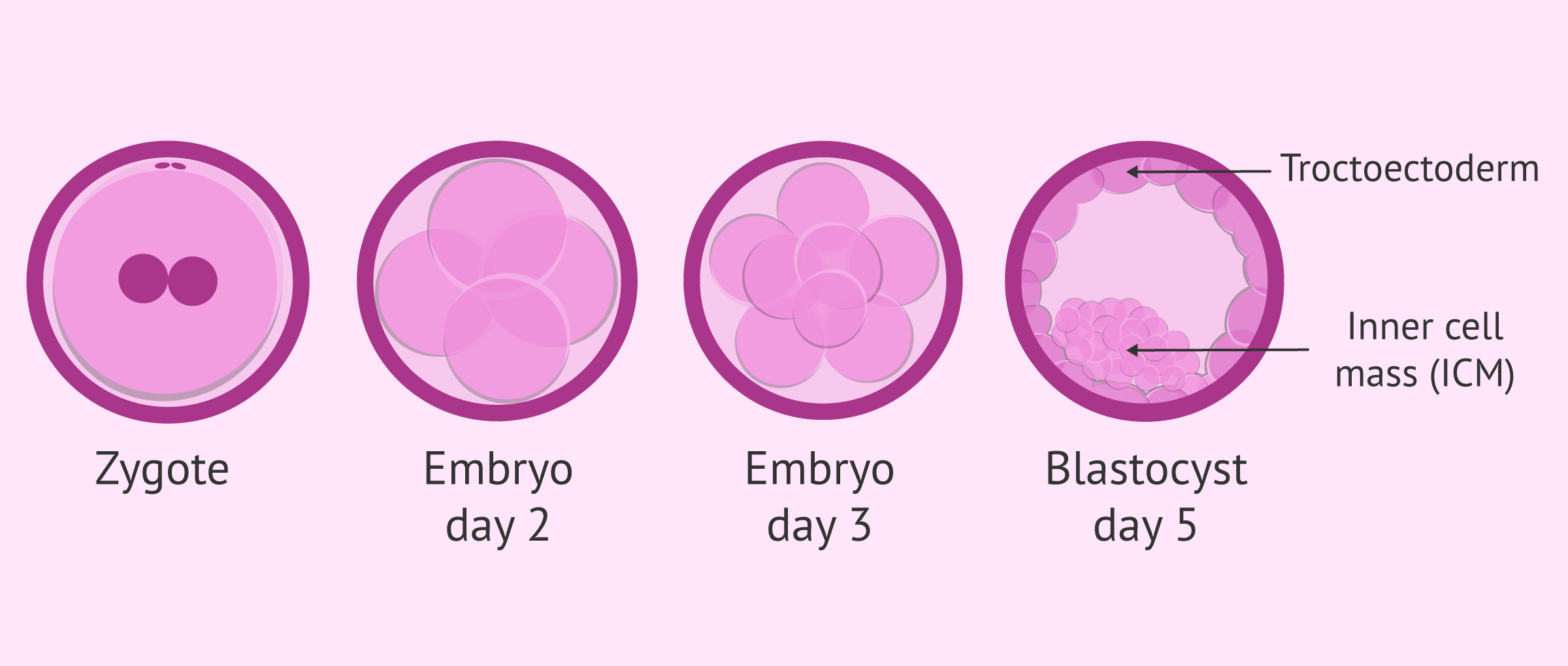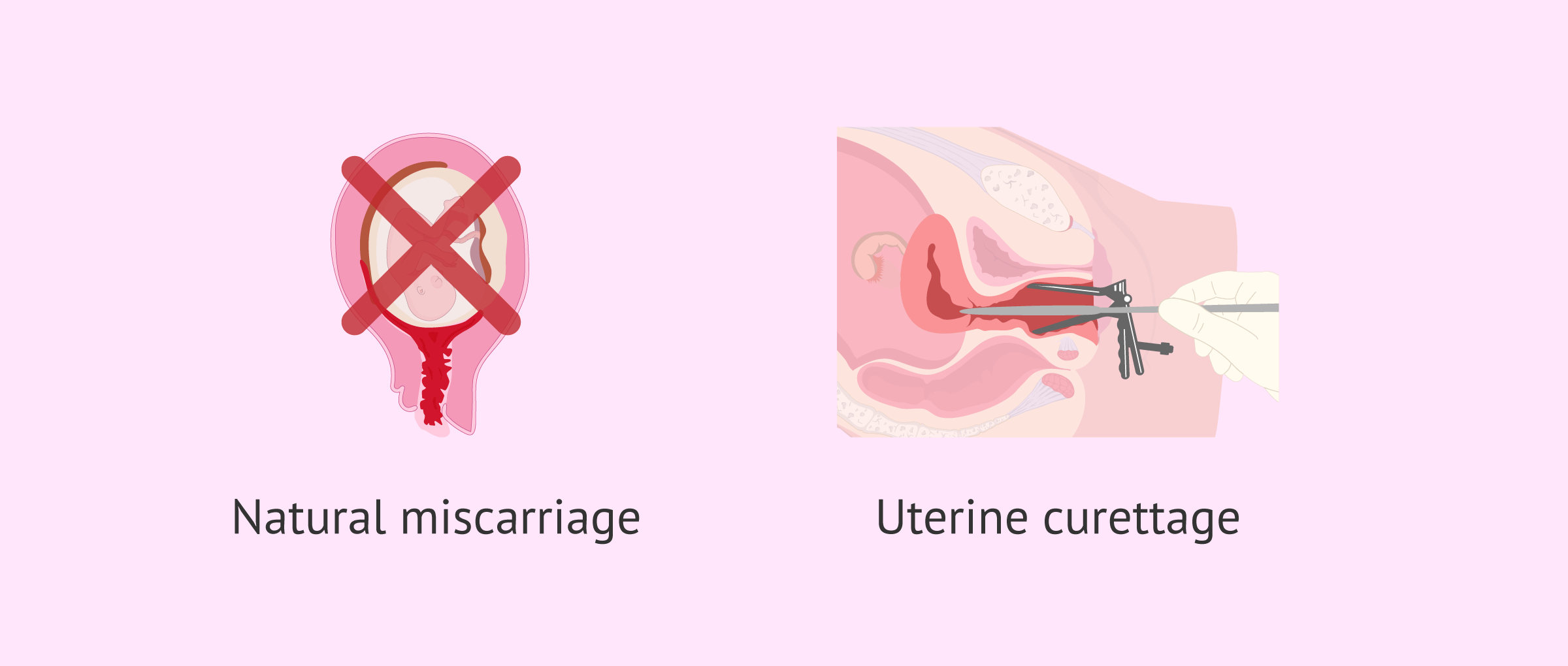The anembryonic or anembryonic pregnancy, also known as empty egg, is one of the causes of miscarriage that occurs very frequently. About 50% of first-trimester pregnancy losses are associated with this problem, which can occur even before a woman knows she is pregnant.
Normally, the main cause of this type of pregnancy is the presence of alterations at the genetic level in the gametes, either in the ovule, in the sperm or in both. This causes that, despite fertilization occurring, embryonic development stops.
Provided below is an index with the 9 points we are going to expand on in this article.
- 1.
- 2.
- 2.1.
- 3.
- 4.
- 5.
- 6.
- 6.1.
- 6.2.
- 6.3.
- 6.4.
- 6.5.
- 6.6.
- 6.7.
- 6.8.
- 7.
- 8.
- 9.
What is anembryonic pregnancy?
A hollow egg is a clinically recognized pregnancy in which an empty gestational sac is observed with no sign of an embryo inside.
The egg has been fertilized by the sperm, and after implanting in the uterine cavity, there is an abnormal development in which it only gives rise to the gestational sac. In simpler words: it is as if it were a pregnancy without a baby.
Normal embryo development
After fertilization occurs between the egg and the sperm, an embryo is formed that multiplies its cells until it reaches the blastocyst stage, which has a peripheral layer of cells that make up the trophectoderm, and a small conglomerate of cells called cell mass internal.
Once the blastocyst has been implanted in the uterus, the trophectoderm will give rise to the placenta, and the internal cell mass to the embryonic discs that will form the fetus. It is the process known as gastrulation.
What causes an anembryonic pregnancy?
When the cells that form the embryonic disks do not develop as they should, cell specialization and tissue formation never occur. This phenomenon is what we call blighted ovum. This causes the cell layers of the gestational sac to continue growing indefinitely and secreting human chorionic gonadotripin (hCG). This is the reason why you can still get a positive pregnancy test despite the absence of a developing embryo.
80% of the cases of anembryonic pregnancy are caused by chromosomal abnormalities in either the egg cell or the sperm cell, which generate an error in coding after fertilization. The consequence is a very early pregnancy loss.
Another possible cause is an abnormal cell division in the embryo right after fertilization occurs.
When is it detected?
The diagnosis of a blighted ovum is done by ultrasound when the specialist sees an empty sac. If this happens, another ultrasound will be scheduled for the following week to confirm the presence or not of an embryo and, if so, the fetal heartbeat.
Pregnancy can be detected at different stages. If no embryo is seen in any of these phases, it may be a case of anembryonic pregnancy:
- The gestational sac is the first embryonic structure that can be seen via ultrasound scan, approximately on the 4th-5th week of pregnancy.
- The yolk sac or fetal pole is an embryonic structure that is located inside the gestational sac, and can be observed by ultrasound on days 2 or 3 after seeing the embryo for the first time.
- Around weeks 7 to 12 of pregnancy, it's possible to hear the fetal heartbeat by doppler ultrasound.
- Finally, the fact that the yolk sac can be seen through ultrasound confirms that the woman is pregnant.
Being unable to see the fetal pole is an indicator of anembryonic pregnancy.
In addition to an ultrasound scan, the absence of pregnancy symptoms and the hormonal levels of the woman will be clear indicators of an anembryonic pregnancy. If the hormonal levels start diminishing, it means that an early pregnancy loss has occurred.
When an anembryonic pregnancy occurs, the woman still tests positive for pregnancy because this hormone is produced by the cell layers of the gestational sac, even if it is actually empty.
Consequences and treatment
The main side effect of an anembryonic pregnancy is the termination of pregnancy, either by means of:
- Spontaneous abortion or miscarriage, accompanied by a natural expulsion and vaginal bleeding.
- D&C after a diagnosis by ultrasound.
Once the absence of embryonic structures has been detected, there is no reason for an empty gestational sac to remain inside the woman's uterus, as the cells end up degenerating and the toxic substances that they produce can lead to serious health conditions. Unfortunately, a miscarriage is the only possible solution, with the subsequent genetic examination of the tissue that has been removed.
It is likely that the woman doesn't even know that she has had an anembryonic pregnancy, as it is possible for the miscarriage to be confused with menstruation.
Can it be repeated twice in a row?
The fact that an anembryonic pregnancy has occurred once does not mean that you are at risk of going through a second one in the future, nor that you are going to have fertility issues.
This type of miscarriage, provided that it progresses normally, should not lead to reproductive complications in the future. The patient will be able to become pregnant again without problems after receiving the appropriate treatment in the future.
In case it was recurrent, the most recommendable is to carry out a genetic study of the couple to determine the cause that is preventing embryo development.
FAQs from users
Is molar pregnancy the same as anembryonic pregnancy?
It is not the same thing. An anembryonic gestation is a gestation in which the gestational sac, the placenta, is produced, but the embryo does not develop. This type of pregnancy is usually diagnosed at 6-7 weeks gestation. Sometimes anembryonic pregnancies are manifested by bleeding, but the vast majority do not show symptoms, and are diagnosed at the time of the first trimester ultrasound.
It is at this ultrasound moment that a gestational sac, a trophoblast, is found, but no embryo is identified. Treatment is usually pharmacological or surgical curettage.

On the other hand, molar disease is a tumor of the placenta. In this type of gestation the embryo is also not identified and there is uncontrolled growth of the placenta. The symptoms are usually bleeding, in some cases expulsion through the vagina of molar tissue (grape clusters), and by very important symptoms of nausea or vomiting, because the pregnancy hormone rises disproportionately.
How long does anembryonic pregnancy last?
Miscarriage can occur during the first trimester of pregnancy, either in week 12, or before the woman knows she is pregnant, in week 5 or 6.
What are the symptoms of anembryonic pregnancy?
In the beginning, the typical symptoms of normal pregnancy may be felt: tiredness, nausea, and breast discomfort. When the hormone level drops, these symptoms decrease and those related to miscarriage appear as pelvic pain and increased vaginal bleeding.
In any case, if there is any suspicion of a possible anembryonic pregnancy, the best thing to do is to visit the gynecologist to evaluate by means of an ultrasound if everything is evolving correctly.
Is it possible to have an anembryonic pregnancy after IVF?
Unfortunately, yes, it can occur in natural pregnancies and in those achieved with an assisted reproductive technique. In fact, it is in these cases when the hollow egg is detected in week 6 or 7, when the transvaginal ultrasound is performed.
Can an anembryonic pregnancy be predicted?
Although it is very difficult to predict, there is an increase in the frequency of miscarriages with maternal age, especially after 40 years of age. Anembryonic pregnancy has also been associated with low levels of folic acid and vitamin B or K in women.
Can a hollow egg take place without bleeding?
There may be no spotting or bleeding before the miscarriage occurs. But eventually, there has to be bleeding that occurs with the abortion, either naturally or induced.
When can a new pregnancy occur after an anembryonic pregnancy?
The World Health Organization (WHO) recommends waiting 6 months before trying to conceive again. However, there are doctors who consider it safe to attempt a new pregnancy after two menstrual cycles.
Can I have a positive pregnancy test if I have a hollow egg?
The answer is yes. Women who have anembryonic pregnancy may have a positive pregnancy test result. In addition, during the first trimester of pregnancy, the woman may experience symptoms such as nausea, fatigue, vomiting, i.e., the usual symptoms of early pregnancy.
Although there is no embryo in the embryo sac, the cells of the placenta continue to produce hCG hormone. As a consequence of the existence of this hormone, the pregnancy test is still positive.
Recommended readings
If you want to learn more about the types of miscarriage and their causes, aside from the one explained here, you can continue reading here: Types of Miscarriage.
To learn more about fetal development and the changes that occur both in the mother and the fetus, check the following post out: Pregnancy Stages by Month.
We have made reference to ultrasound imaging (sonography) is a technique for confirming a pregnancy. Learn more about it here: What Is a Fetal Ultrasound?
We make a great effort to provide you with the highest quality information.
🙏 Please share this article if you liked it. 💜💜 You help us continue!
References
Kim C, Barnard S, Neilson JP, Hickey M, Vazquez JC, Dou L. Medical treatments for incomplete miscarriage. Cochrane Database Syst Rev. 2017 Jan 31;1:CD007223. (see)
Khalid Chaudhry, Dawood Tafti, Marco A. Siccardi. Anembryonic Pregnancy. In: StatPearls [Internet]. Treasure Island (FL): StatPearls Publishing; 2021 Jan. 2021 Sep 25. (see)
Regan L, Braude PR, Trembath PL. Influence of past reproductive performance on risk of spontaneous abortion. BMJ. 1989 Aug 26;299(6698):541-5. (see)
FAQs from users: 'Is molar pregnancy the same as anembryonic pregnancy?', 'Will I be able to get pregnant again after a blighted ovum?', 'How long does anembryonic pregnancy last?', 'When does miscarriage happen with a blighted ovum?', 'What are the symptoms of anembryonic pregnancy?', 'Is it possible to have an anembryonic pregnancy after IVF?', 'Can an anembryonic pregnancy be predicted?', 'Can a hollow egg take place without bleeding?', 'When can a new pregnancy occur after an anembryonic pregnancy?' and 'Can I have a positive pregnancy test if I have a hollow egg?'.
Authors and contributors
More information about Cristina Algarra Goosman








Dear Doctor,
I visited my Dr last week and we found out that I am pregnant… She did a sonogram and said there was no fetal pole inside… We’re waiting now for another sonogram next week. Should I be concerned? :S Am I going to lose my baby?
Please, help!
Dear Yuliya,
As your doctor determined, you have to wait until next week and see what the sonogram shows. If it’s still empty, then I’m afraid it might be a case of anembryonic pregnancy.
Wishing you the best of luck!
Best